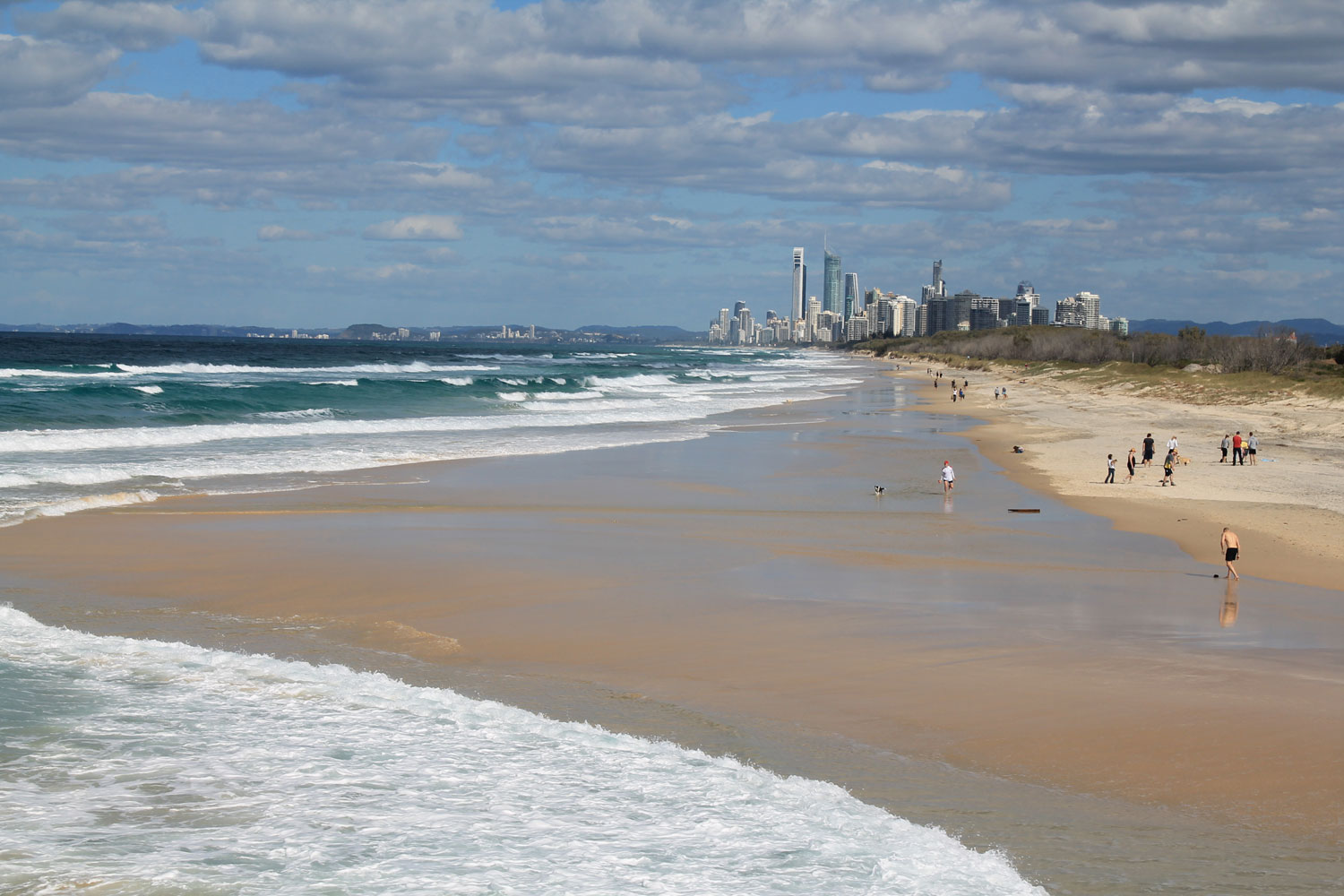A number of agencies are involved in protecting the coastal zone along the Gold Coast, including the Gold Coast City Council.
The extract below summarises the council's position and explains why action is required to protect the coast.
Protecting Coasts
What's the Gold Coast without its coast? Although there's much more to our city than its beaches, our stunning coastline gives our city its identity. We live and work along the coast, we play on the coast, our coastline protects us, and it supports a rich variety of coastal and marine wildlife.
The city's coastline extends from Point Danger in the south to Jumpinpin at the northern end of South Stradbroke Island. History has shown that this iconic coastline is also a dynamic one. The sandy littoral zone - the area from shoreline to just beyond the wave breaker zone - is the city's frontline against powerful wave action that is intensified during extreme weather events. Such wave action determines the shape and state of our beaches and coast. The significant economic, social and environmental benefits and services provided by our coastal areas means that coastal management is a serious and important issue for the Council and the community.
Modifications to the coastal zone over time, including the construction of public and private infrastructure very close to the coastline, has exposed the city to significant risk from a dynamic and high energy ocean. These risks are compounded by the predicted impacts of climate change on the Gold Coast, where the coast's vulnerability has been observed during intense weather events through the 1960s to 1970s. An urbanised coastline also results in continual risk of pollution from hard rubbish and stormwater, both of which can have significant effects on water quality and wildlife.
Gold Coast City Council has been a leader in coastal management for more than 50 years, driven by the need to protect the city and its shoreline from the impacts of storms. Active management including beach nourishment, seawall construction, improving access to beaches, beach cleaning, dune restoration and sand bypassing all contribute to protecting the coastal environment'.
The dynamic coastal environment is shaped by interactions between ecology, physical processes, storm events and our human activities.
The Gold Coast Council, in partnership with Griffith University's Centre for Coastal Management, actively seeks to better understand the ecological and physical processes that shape the coastal environment, so that it can be managed sustainably.
The coastal environment of the Gold Coast is teeming with life. From the great sandy dunes of South Stradbroke Island to the rocky shore at Burleigh Headland, to the coastal wetlands of Coombabah lies an abundance of plant and animal life, of all shapes and sizes.
The movement of sand plays a fundamental role in creating and shaping our coastal environment. Although the East Coast of Australia is affected by the Eastern Australian Current, its greatest determinant is the process of longshore drift.
Natural disasters have played a huge role in the history of the Gold Coast. Cyclones, tsunamis and storm surges affect not just the coastal development and recreational amenity, but also the ecosystems of the coast.
Sparkling beaches and waterways are synonymous with the Gold Coast and so the Gold Coast City Council invests into a range of cleaning and management services to ensure our beaches and foreshores retain their sparkle
Thirty six kilometres of ocean beaches on the mainland are swept between midnight and sunrise on every day of the year. This involves raking the beach using tractors to remove all of the rubbish and litter.
The Gold Coast City Council has six crews which patrol the 860 kilometres of tidal waterways within the City and remove over 1000 tonnes per year of floating debris'.
Not only are the beaches on the Gold Coast cleaned, but the sand is cleaned as well! The Gold Coast Seaway scheme has been designed to keep drifting sand clear of the main seaway that links the harbour to the open sea. At the same time the sand is cleaned and returned to the beach further along the coast. More information can be found at the link below:
Gold Coast Seaway (pdf)The Gold Coast Seaway jetty does not look very attractive and has a negative impact on the visual environment. However, the sand-cleaning processes and the system for keeping the seaway open, is vital in the management of the Gold Coast beaches.
EVIDENCE LOG 4 - Cleaning Gold Coast beaches
Based on the above excerpt, think of three benefits of having beaches and sand being cleaned regularly and record them on the Evidence Log.
It is important to understand that in most areas of the world, events such as floods, cyclones and tsunamis happen from time to time. Many natural processes are occurring continuously, making constant changes to the environment. A sustainable approach involves not interfering with these processes wherever possible. However, as mentioned in the section above, sudden catastrophic events, which cannot be planned for, may have a major impact on an area.
What would be the impacts of a major tsunami hitting the coast of Surfers Paradise?








